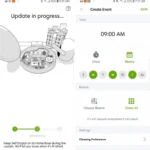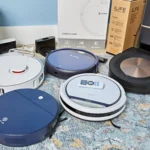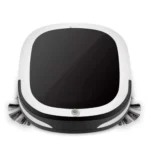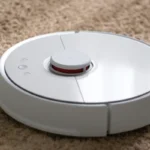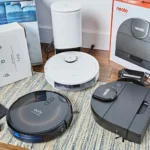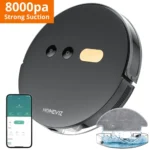As our world becomes increasingly automated, smart vacuum cleaners have become a popular choice for keeping homes clean without having to lift a finger. But have you ever wondered how these devices avoid obstacles and prevent collisions? The technology behind anti-collision sensors in smart vacuum cleaners is an amazing feat of engineering that involves several different types of sensors and advanced algorithms. In this article, we will take a deep dive into the world of anti-collision sensors, exploring how they work, the role of machine learning in their operation, advanced features and technologies available, and what the future holds for this fascinating technology. So fasten your seatbelts and get ready to discover the secrets behind one of the most important components of a smart vacuum cleaner.
The Basics of Anti-Collision Sensors
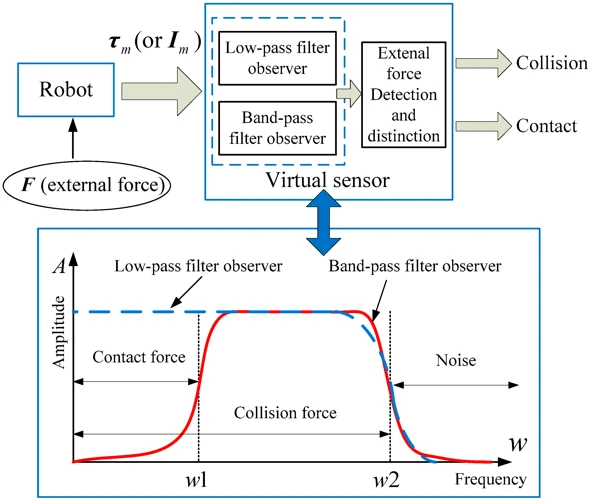
When it comes to smart vacuum cleaners, anti-collision sensors are a crucial piece of technology. These sensors are what enable the vacuum cleaner to navigate through a room and avoid obstacles without colliding into them. In this section, we’ll dive into the different types of anti-collision sensors used in smart vacuums, including infrared sensors, ultrasonic sensors, cliff sensors, and bumper sensors. By understanding how each of these sensors works, you’ll gain a deeper appreciation for the complexity behind a smart vacuum’s ability to move around a room and clean efficiently. If you’re interested in learning more about the pros and cons of anti-collision sensors or how to troubleshoot them, be sure to check out our related articles here and here.
Infrared Sensors
Infrared Sensors: Infrared sensors are the most common type of anti-collision sensors used in smart vacuum cleaners. These sensors work by emitting pulses of infrared radiation, which bounce back when they come into contact with an object. Based on the time it takes for the signal to bounce back, the machine can determine how far away the object is and adjust its path accordingly.
| Pros of Infrared Sensors | Cons of Infrared Sensors |
|---|---|
| Reliable detection of close-range obstacles. | Struggle with detecting transparent or reflective surfaces. |
| Easy to implement, low cost and energy-efficient. | May not detect objects that are too small or too large. |
| Good for detecting objects that are stationary. | May report false positives due to sunlight or other sources of IR radiation. |
While infrared sensors have many advantages, they are not without their limitations. For instance, they may struggle to detect objects that are too small or too large, and they can report false positives due to sunlight or other sources of IR radiation. However, they are generally reliable when it comes to detecting close-range obstacles, which makes them ideal for use in household environments.
The sensors may not be able to detect transparent or reflective surfaces such as glass or mirrors. This can cause problems in determining an object’s distance accurately. Vacuum manufacturers have addressed this problem by integrating other types of sensors like drop sensors or cliff sensors in their devices.
Despite the limitations, infrared sensors are a popular choice because they are easy to implement, cost-effective, and energy-efficient. As more and more innovations in anti-collision sensor technology occur, we can expect to see further improvements to infrared sensors in the near future.
Ultrasonic Sensors
Ultrasonic sensors are another commonly used sensor in smart vacuum cleaners to help them avoid obstacles and prevent collisions. These sensors work by emitting high-frequency sound waves, which bounce off nearby objects and return to the sensor. The sensor then measures the time it takes for the sound waves to return, which allows it to determine the distance between the vacuum cleaner and the object.
One of the main advantages of ultrasonic sensors is that they can detect objects at longer distances than infrared sensors. This makes them especially useful in larger rooms or spaces where the vacuum cleaner needs to travel farther to clean the entire area.
However, ultrasonic sensors can be less effective in rooms with mirrors, glass surfaces, or other reflective materials as the sound waves can bounce off these surfaces and create inaccurate readings.
To compensate for this limitation, some smart vacuum cleaners use a combination of both infrared and ultrasonic sensors to improve their accuracy and provide more comprehensive coverage of the cleaning area.
Here is a table below that highlights some key characteristics of ultrasonic sensors:
| Advantages | Disadvantages |
|---|---|
| Ability to detect objects at longer distances | Less effective in rooms with reflective surfaces |
| Greater coverage of cleaning area | May be costlier to manufacture than infrared sensors |
| Can detect finer details of objects | May not be suitable for all types of flooring |
| Less susceptible to interference from other sensors or devices |
It’s important to note that while ultrasonic sensors can be highly effective in preventing collisions and ensuring a thorough cleaning job, they may not be suitable for all types of flooring. For example, high-pile carpets or shag rugs can interfere with the sensor’s ability to accurately detect nearby objects. To address this issue, some smart vacuum cleaners use a range of different sensors and technologies to provide the most comprehensive and effective cleaning experience possible.
Read more about anti-collision sensors for different types of flooring.
Cliff Sensors
Cliff sensors are another type of anti-collision sensor found in smart vacuum cleaners. As the name suggests, these sensors detect cliffs or drops in the floor, preventing the vacuum cleaner from accidentally tumbling down stairs or off edges.
The way that cliff sensors work is by emitting an infrared signal and measuring the time it takes for the signal to bounce back. If the signal takes longer than usual to bounce back, it indicates that there is a drop or cliff, and the vacuum cleaner will adjust its path accordingly.
The Benefits of Cliff Sensors
Cliff sensors are an important safety feature in smart vacuum cleaners, helping to prevent accidents and damage to the vacuum or surrounding furniture. They also allow the vacuum cleaner to clean around obstacles and navigate complex environments.
The Limitations of Cliff Sensors
Despite their utility, cliff sensors can sometimes be triggered by dark carpets, causing the vacuum cleaner to treat them as cliffs and avoid cleaning areas that are actually safe to clean. Additionally, cliff sensors are not foolproof and may miss small drops or cliffs, especially if they are not placed in the optimal position.
The Importance of Integration
To overcome these limitations, manufacturers are constantly looking for ways to integrate multiple sensor types in one device. By combining cliff sensors with other types of sensors, such as cameras or lidar technology, manufacturers can create vacuum cleaners that are even more capable of navigating complex environments and cleaning efficiently.
Cliff sensors are an important safety feature found in many smart vacuum cleaners. While they have some limitations, manufacturers are always looking for new ways to improve their performance and integrate them with other technologies to make vacuum cleaners even more effective at cleaning our homes.
Bumper Sensors
Bumper sensors are another type of anti-collision sensor used in smart vacuum cleaners. These sensors are located on the edges and corners of the vacuum and are designed to detect physical contact with objects. When the bumper sensor detects an object, it triggers the vacuum to stop and move in a different direction.
Here are some key points to keep in mind about bumper sensors in smart vacuums:
- Simple but effective: Bumper sensors are a simple yet effective way to prevent the vacuum cleaner from colliding with objects in the room. They work by physically hitting objects and detecting the impact, making them a reliable and durable option.
- Protects against damage: Another benefit of bumper sensors is that they protect both the vacuum cleaner and any delicate objects in the room. By detecting and avoiding objects, the vacuum cleaner is less likely to damage furniture, walls or other objects in the room.
- Limited precision: Although bumper sensors are great for preventing collisions, they lack the precision of other sensor types when it comes to detecting objects that are farther away. They are most effective at detecting objects that are within a few inches of the vacuum.
- May miss smaller objects: Bumper sensors can also struggle with detecting smaller objects or objects that are much lower than the height of the bumper sensor. This is where other sensors come in to play, such as lidar and infrared sensors.
While bumper sensors may seem like the most basic type of anti-collision sensor, they are an essential component of any smart vacuum cleaner. Without them, the vacuum would be prone to bumping into furniture and other objects, causing damage and reducing efficiency. By combining bumper sensors with other types of sensors, the vacuum can create a comprehensive map of the room and avoid obstacles with ease.
The Role of Machine Learning in Anti-Collision Sensors
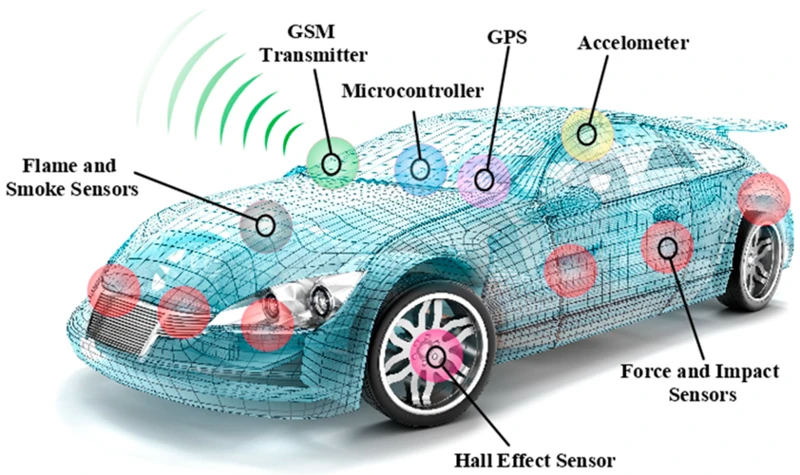
As technology advances, so too does our ability to make domestic chores easier and more efficient. One area that has seen great strides is the development of smart vacuums, which use a variety of sensors to navigate around objects, avoid obstacles, and clean floors with minimal human input. Of particular interest is the use of machine learning in anti-collision sensors, which allows these devices to continually improve their performance over time. This section will explore the critical role of machine learning in anti-collision sensors, highlighting the ways in which it enhances the capabilities of smart vacuums.
Data Collection
To make anti-collision sensors intelligent, they need to collect data constantly. Data collection is the first step in machine learning and AI, and it is essential for understanding the environment and predict the outcome. In the case of smart vacuum cleaners, data collection is necessary for interpreting the room layout and avoiding obstacles, allowing the sensors to navigate the room with ease.
Data Collection Process
The data collection process involves the creation of a dataset that is used to train the machine learning algorithms. The dataset is made up of various inputs, including sensor readings, images, and sound, collected by the anti-collision sensors in the vacuum cleaner.
The process of collecting this data is intricate and time-consuming, as the sensors must gather data from different perspectives and angles. This data is then processed and combined to create a more comprehensive understanding of the environment.
To ensure that the dataset is accurate and effective, the sensors are programmed to collect data at specific intervals. This ensures that they capture a wide range of inputs and environmental conditions. For instance, sensors must record data both when there are obstacles in the vacuum cleaner’s path and when there are no obstructions.
Data Preprocessing and Validation
Once the dataset has been created, it must be preprocessed and validated before it is used to train the machine learning algorithms. This process involves cleaning the data to remove errors and inconsistencies, such as noise and outliers.
To ensure that the data collected is accurate and practical, validation tests are performed on the dataset. These tests are designed to assess the reliability of the data and ensure that it is robust enough for the algorithms to learn and make accurate predictions.
Data collection is a critical component of anti-collision sensor technology. The data collected is used to train machine learning algorithms that power the sensors enabling them to make accurate predictions and avoid obstacles.
Pattern Recognition
One of the key roles of machine learning in anti-collision sensors is pattern recognition. The sensor collects large amounts of data about its surroundings and uses that data to identify patterns and predict potential collisions.
How Pattern Recognition Works
Pattern recognition requires a lot of data and advanced algorithms. The sensor collects data about its surroundings, such as the distance to objects, their size and shape, and their location in the room. This data is fed into a computer algorithm, which uses complex algorithms to identify patterns and predict potential collisions.
The Benefits of Pattern Recognition
Pattern recognition allows the sensor to learn from experience and improve its collision detection abilities over time. As the sensor encounters more obstacles, it will become better at recognizing patterns and avoiding collisions in the future.
| Benefits of Pattern Recognition | Explanation |
|---|---|
| Improved Collision Detection | Pattern recognition allows the sensor to detect potential collisions more accurately. |
| Real-Time Adaptation | Pattern recognition allows the sensor to adapt in real-time to new or unexpected obstacles. |
| Efficient Navigation | Pattern recognition allows the sensor to move more efficiently around the room, avoiding unnecessary collisions and delays. |
The Challenges of Pattern Recognition
Pattern recognition is a complex process that requires a lot of computing power and advanced algorithms. The more data the sensor collects, the more accurate its predictions will be, but this also requires more storage and processing power. Additionally, the sensor must be able to recognize a wide variety of patterns in real-time, which can be a difficult task.
The Future of Pattern Recognition
Advancements in machine learning and artificial intelligence are expected to make pattern recognition more efficient and accurate in the future. With the ability to collect and analyze more data than ever before, anti-collision sensors will become even more advanced and effective at navigating around obstacles in the home.
Learning from Mistakes
One of the most important aspects of anti-collision sensors in smart vacuum cleaners is their ability to learn from mistakes. This is accomplished through a combination of advanced algorithms and machine learning techniques. Here are some ways in which anti-collision sensors can learn from mistakes:
- Adaptation to new environments: When a smart vacuum cleaner is first introduced to a new environment, its sensors may make mistakes as they learn to navigate around the various obstacles in the room. However, the more the vacuum cleaner operates in that environment, the better its sensors become at detecting and avoiding obstacles. This is because the sensors are constantly collecting data and using that data to improve their accuracy.
- Adjusting to changes in the environment: Even in a familiar environment, changes can occur that may cause a smart vacuum cleaner’s sensors to make mistakes. For example, if a piece of furniture is moved or if clutter is left on the floor, the vacuum cleaner may need to update its map of the room to avoid these new obstacles. The sensors can learn to detect and adapt to these changes over time.
- Identifying common mistakes: Anti-collision sensors can also learn to identify common mistakes that they make and adjust their behavior accordingly. For example, if a sensor repeatedly misses a particular obstacle, it may be recalibrated or adjusted to improve its accuracy in that specific scenario.
- Integrating feedback from users: Smart vacuum cleaners can also learn from feedback provided by their human users. For example, if a user consistently complains about the vacuum cleaner bumping into a particular piece of furniture, the sensors can be adjusted to avoid that obstacle in the future.
By leveraging these methods, anti-collision sensors are able to continuously improve their accuracy and effectiveness over time, resulting in a more efficient and reliable smart vacuum cleaner.
Real-Time Adaptation
Real-time adaptation is one of the most advanced features of modern anti-collision sensors that sets them apart from their earlier counterparts. The ability of these sensors to learn and adapt in real-time allows them to quickly adjust to new environments and obstacles.
One of the most important aspects of real-time adaptation is the use of machine learning algorithms that enable the sensors to detect and process data in real-time. The data collected by sensors is processed and analyzed in real-time, allowing the sensors to quickly adjust to changes in the environment.
To achieve this, anti-collision sensors use a combination of hardware and software. Hardware components such as lasers, cameras, and radar are used to capture data from the environment, and these data are then processed by advanced software algorithms to generate a real-time map of the environment. This map is used by the robot vacuum to navigate around obstacles and avoid collisions.
Additionally, anti-collision sensors are equipped with smart algorithms that allow them to analyze patterns in data and adapt their behavior accordingly. For example, if the sensors detect a new obstacle in their path, they can immediately analyze its size, shape, and location and adapt their movements to avoid it.
To make this possible, anti-collision sensors rely on a library of pre-defined behaviors that are designed to handle different types of obstacles. These behaviors are then customized based on the sensor’s observed environment, allowing it to adapt in real-time to new obstacles and changing environments.
Real-time adaptation is a critical feature of anti-collision sensors that has revolutionized the way we clean our homes. With their ability to learn and adapt in real-time, these sensors have made vacuuming more efficient and less frustrating, helping us to keep our homes clean and free of clutter.
| Innovations | Explanations |
|---|---|
| Hardware (lasers, cameras, radar) | Help to capture data from the environment. |
| Advanced software algorithms | Process and analyze the data to generate a real-time map of the environment |
| Library of pre-defined behaviors | Designed to handle different types of obstacles and customize based on the sensor’s observed environment |
Advanced Features and Technologies in Anti-Collision Sensors
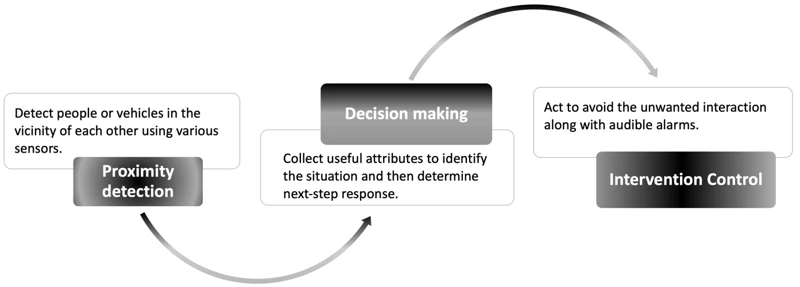
As technology advances, so do the features and capabilities of anti-collision sensors in smart vacuum cleaners. These innovative sensors go beyond basic obstacle detection, providing advanced features to enhance the overall cleaning experience. Let’s explore some of the cutting-edge technologies available in modern vacuum cleaners. From object detection to room mapping and navigation, these features are sure to impress even the most discerning homeowner. Get ready to discover a world of possibilities and take your cleaning routine to the next level.
Object Detection
Object detection is one of the most advanced features of anti-collision sensors in smart vacuum cleaners. It enables the device to not only detect obstacles, but also to identify them and respond accordingly to avoid collisions. There are several types of object detection sensors that work in combination to provide accurate and reliable obstacle detection and avoidance.
One of the most common object detection sensors is the visual sensor, which uses cameras to capture images and then analyzes them to detect obstacles. Another type of object detection sensor is the distance sensor, which uses ultrasound or laser technology to measure the distance between the vacuum cleaner and nearby objects.
Combining these sensors with machine learning algorithms allows the smart vacuum cleaner to not only detect objects, but also to recognize them and respond accordingly. For example, it can detect a chair or a table and determine the best way to avoid it without leaving any dirt or dust behind.
Another essential feature of object detection in smart vacuum cleaners is real-time adaptation. By constantly monitoring its surroundings and quickly adapting to changing scenarios, the device can avoid collisions and navigate through complex environments with ease.
Many smart vacuum cleaners come with integration with other smart home devices, such as Amazon Alexa, Google Home, or Apple HomeKit. This allows users to control their device with voice commands, and they can even schedule their cleaning when they are not at home.
Object detection is an essential feature of anti-collision sensors in smart vacuum cleaners. It enables the device to navigate through complex environments and provide efficient and effective cleaning without any collisions or other incidents. With the rapidly advancing technology, it is expected that object detection in smart vacuum cleaners will become even more advanced and reliable in the future.
| Types of Object Detection Sensors | Description |
|---|---|
| Visual Sensor | Uses cameras to capture images and then analyzes them to detect obstacles. |
| Distance Sensor | Uses ultrasound or laser technology to measure the distance between the vacuum cleaner and nearby objects. |
Room Mapping and Navigation
Room mapping and navigation is one of the most important features in anti-collision sensors for smart vacuum cleaners. With the help of advanced sensors and machine learning algorithms, these devices can create a virtual map of the room and navigate around obstacles in real time.
How does it work?
Smart vacuum cleaners use a combination of sensors and algorithms to create a map of the room. They use sensors like LIDAR (Light Detection and Ranging), cameras, and infrared sensors to measure the distance to objects and create a 3D map of the room. The device then uses this map to plan its cleaning path and avoid any obstacles in its way.
The benefits of room mapping and navigation
The benefits of room mapping and navigation are numerous. First, it ensures that the entire room is cleaned thoroughly, without the need for any manual adjustments. Second, it ensures that the device doesn’t damage any furniture, walls or other objects in the room during the cleaning process.
The limitations of room mapping and navigation
While room mapping and navigation is an incredibly useful feature, it is not 100% perfect. If the lighting conditions in a room change significantly during the cleaning process, or if an object is moved out of the way, the map may need to be redrawn. Additionally, some surfaces may not be compatible with the sensors used by some smart vacuum cleaners, making it difficult for the device to create an accurate map.
Advanced room mapping and navigation technologies
One of the most exciting advancements in room mapping and navigation is the integration of AI and machine learning algorithms. These algorithms can analyze the map and adjust the cleaning path in real-time, ensuring that the device is as efficient as possible. Additionally, some smart vacuum cleaners can recognize different types of floors and adjust the cleaning mode automatically for each floor type.
The following table summarizes the benefits, limitations, and advanced technologies of room mapping and navigation:
| Benefits | Limitations | Advanced Technologies |
|---|---|---|
| Ensures thorough cleaning of the room | The map may need to be redrawn due to changes in lighting or object placement | Integration with AI and machine learning algorithms for real-time adjustments |
| Prevents damage to furniture, walls, and other objects in the room | Surfaces that are not compatible with the sensors may pose a challenge | Recognition of different floor types and automatic adjustment of cleaning mode |
Room mapping and navigation is an essential feature in anti-collision sensors for smart vacuum cleaners. While it does have some limitations, advanced machine learning algorithms are constantly improving this technology and making it more efficient.
Obstacle Avoidance
Smart vacuum cleaners have come a long way from simple robots that could only follow a predetermined path. One of the most important and advanced technologies that make them truly autonomous is obstacle avoidance. This feature enables the vacuum cleaner to detect incoming obstacles and change its path to avoid collisions. The technology for detecting obstacles varies from model to model, but there are some common approaches.
1. Lidar
Lidar is a remote sensing technology that uses lasers to measure distances. It is commonly used in self-driving cars and robotics, including smart vacuum cleaners. Lidar sensors emit laser beams in various directions and use the time of flight to determine the distance to objects. This results in a 3D map of the surrounding in real-time, and the vacuum cleaner can easily avoid obstacles.
2. Time-of-Flight (ToF) Sensors
ToF is a sensing technology that measures the time it takes a laser or LED to reflect off an object and return to the sensor. ToF sensors work similarly to radar or sonar, but they use light instead of sound waves. These sensors measure distances accurately, regardless of the texture and color of the object.
3. Camera and AI
Another approach to obstacle avoidance is using cameras and Artificial Intelligence (AI) algorithms. The system records the surroundings using a camera, and then an AI algorithm processes the information to detect the presence of objects and determine their distance and size. Some vacuum cleaners use machine learning to recognize objects like sofas, chairs, or tables, and know how to go around them.
4. Bumper Sensors
Bumper sensors are the most basic form of obstacle detection. Whenever the vacuum cleaner collides with an object, the bumper sensor sends a signal to the system, and the vacuum cleaner changes its direction. However, this method is not as advanced as the others, as it can only detect obstacles when they come into contact with the vacuum cleaner.
Obstacle avoidance technology enables the vacuum cleaner to navigate through your home safely and effectively without bumping into furniture or other items. The implementation of obstacle avoidance technologies like Lidar, ToF sensors, camera and AI or bumper sensors has made the cleaning process more efficient and reduced the chances of collisions. As these technologies advance, the future of smart vacuum cleaners looks even brighter.
Integration with Other Smart Home Devices
In today’s world, smart homes are becoming increasingly popular, and anti-collision sensors in smart vacuum cleaners are an essential component of these homes. What makes these sensors even more powerful and useful is their ability to seamlessly integrate with other smart home devices.
Integration with Other Smart Home Devices
Anti-collision sensors in smart vacuum cleaners can be integrated with a variety of smart home devices, allowing for a more streamlined and efficient cleaning and home automation experience. Here are some examples of how anti-collision sensors work with other smart home devices:
| Smart Home Device | Functionality |
|---|---|
| Smart Lights | Anti-collision sensors in smart vacuum cleaners can communicate with smart lights to automatically turn them on and off as the vacuum cleaner moves around the house. This means that the room being cleaned will always have adequate lighting, making it easier for the vacuum cleaner to navigate and avoid obstacles. |
| Smart Locks | The anti-collision sensors can work together with smart locks in the home to be able to enter and exit rooms autonomously. This means that the vacuum cleaner can access and clean rooms even when you’re not around. |
| Smart Speakers | Smart vacuum cleaners can be integrated with smart speakers such as Amazon Echo or Google Assistant. This allows you to control the vacuum cleaner with your voice and give it commands such as “start cleaning the living room” or “return to the charging dock”. |
| Smart Thermostats | Anti-collision sensors can also work with smart thermostats to help regulate the temperature in different rooms. As the vacuum cleaner moves around, it can detect the temperature in different rooms and adjust the thermostat accordingly to maintain a consistent temperature across your home. |
By integrating anti-collision sensors in smart vacuum cleaners with other smart home devices, users can enjoy a more convenient and automated lifestyle. Integrating anti-collision sensors with other devices is an example of how home technology is evolving and becoming more advanced.
The Future of Anti-Collision Sensor Technology
As technology continues to evolve and improve, the future of anti-collision sensor technology looks incredibly promising. One area where we are likely to see significant advancements is in the use of LiDAR sensors. These sensors use lasers to create precise 3D maps of an environment, which means that smart vacuum cleaners will be able to detect and avoid obstacles with far greater accuracy and efficiency.
Another technology that could help to improve anti-collision sensors is the use of machine learning techniques like deep neural networks. This would enable smart vacuums to learn from their experiences and make even more accurate decisions about how to navigate around obstacles.
We may also see greater integration between smart vacuums and other connected home devices, such as security cameras and smart speakers. This could enable vacuums to take on more functions beyond simple cleaning — for instance, they could alert homeowners to potential security threats or provide them with information about the state of their home environment.
The future of anti-collision sensor technology is exciting, and we can expect to see significant improvements in this area in the years to come. As smart vacuum cleaners become more adept at navigating and avoiding obstacles, they will become even more valuable tools in maintaining a clean and comfortable home environment for their owners.
Conclusion
In conclusion, it is undeniable that anti-collision sensors play a crucial role in the operation and safety of smart vacuum cleaners. Through the use of infrared, ultrasonic, cliff, and bumper sensors, the vacuum cleaner is able to detect and avoid obstacles in its path.
Moreover, machine learning has further enhanced the capabilities of these sensors by allowing for real-time adaptation and pattern recognition. This has led to advanced features such as object detection, room mapping and navigation, and obstacle avoidance, all of which contribute to a more efficient and effective cleaning process.
Looking towards the future, it is expected that anti-collision sensor technology will continue to evolve and improve, leading to even smarter and more sophisticated smart vacuum cleaners. As integration with other smart home devices becomes more seamless, the possibilities of what these sensors can achieve are endless.
In summary, anti-collision sensor technology is a major driving force behind the success and widespread adoption of smart vacuum cleaners. Its continued advancement and refinement will undoubtedly pave the way for even more intelligent and convenient home cleaning solutions.
Frequently Asked Questions
1. How do anti-collision sensors work in smart vacuum cleaners?
Anti-collision sensors use different technologies such as infrared, ultrasonic, cliff, and bumper sensors to detect obstacles and prevent collisions.
2. What is the difference between infrared and ultrasonic sensors?
Infrared sensors use light waves to detect objects, while ultrasonic sensors use sound waves.
3. How do cliff sensors prevent vacuums from falling down stairs?
Cliff sensors use infrared or optical sensors to detect and avoid drop-offs, such as stairs or ledges.
4. What happens when a vacuum cleaner bumps into an object?
Most vacuums have bumper sensors that detect the impact and redirect the vacuum to prevent damage to the object or the vacuum itself.
5. Can anti-collision sensors in smart vacuums learn and adapt over time?
Yes, many smart vacuums use machine learning algorithms to collect data, recognize patterns, and adapt to new environments and obstacles.
6. How do anti-collision sensors help with obstacle avoidance?
Anti-collision sensors scan the surrounding area to detect objects and adjust the vacuum’s path to avoid collisions or get around obstacles.
7. Do anti-collision sensors improve the cleaning performance of smart vacuums?
Yes, anti-collision sensors help smart vacuums navigate more efficiently and effectively, which leads to better cleaning performance in less time.
8. Can anti-collision sensors be integrated with other smart home devices?
Yes, many smart vacuums can be connected to other devices such as Google Home or Alexa, allowing users to control the vacuum with voice commands or set up scheduled cleanings.
9. What is the future of anti-collision sensor technology in smart vacuums?
The future of anti-collision sensor technology in smart vacuums lies in advanced machine learning algorithms, real-time adaptation, and better integration with other smart home technologies.
10. Are anti-collision sensors in smart vacuums worth the investment?
Yes, anti-collision sensors in smart vacuums can save time, energy, and reduce the risk of damage to the vacuum, furniture, and other objects in the home, making it a worthwhile investment in the long run.

